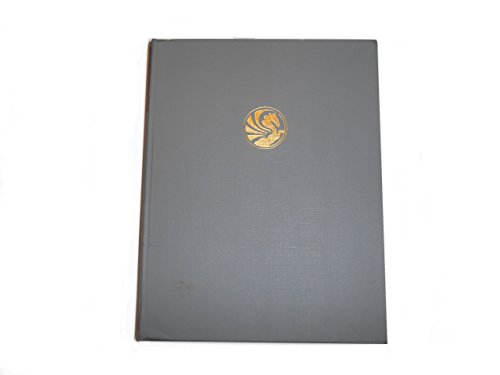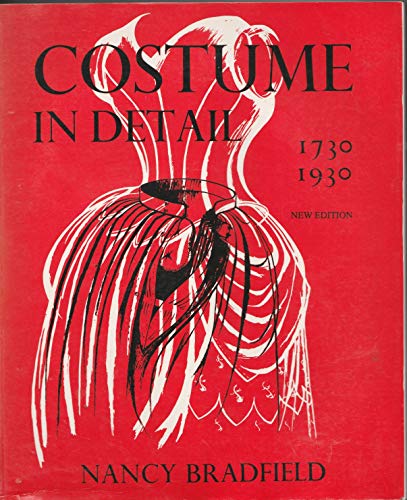N BRADFIELD (56 resultados)
Tipo de artículo
- Todo tipo de artículos
- Libros (55)
- Revistas y publicaciones (1)
- Cómics
- Partituras
- Arte, grabados y pósters
- Fotografías
- Mapas
-
Manuscritos y
coleccionismo de papel
Condición
Encuadernación
Más atributos
- Primera edición (13)
- Firmado (1)
- Sobrecubierta (8)
- Con imágenes del vendedor (6)
- Sin impresión bajo demanda (47)
Gastos de envío gratis
Ubicación del vendedor
Valoración de los vendedores
-
Point of View: Design by Jay Spectre
Publicado por Little Brown and Company, 1991
ISBN 10: 0821218492ISBN 13: 9780821218495
Librería: ThriftBooks-Dallas, Dallas, TX, Estados Unidos de America
Libro
Hardcover. Condición: Good. No Jacket. Pages can have notes/highlighting. Spine may show signs of wear. ~ ThriftBooks: Read More, Spend Less 2.5.
Más opciones de compra de otros vendedores en IberLibro
Usado desde EUR 7,83
Encuentre también Original o primera edición Ejemplar firmado
-
Celebration: Christmas in New York
Publicado por Allen D. Bragdon Publishers, Inc., 1993
ISBN 10: 0916410617ISBN 13: 9780916410612
Librería: ThriftBooks-Dallas, Dallas, TX, Estados Unidos de America
Libro
Hardcover. Condición: Very Good. No Jacket. May have limited writing in cover pages. Pages are unmarked. ~ ThriftBooks: Read More, Spend Less 1.2.
Más opciones de compra de otros vendedores en IberLibro
Nuevo desde EUR 64,30
Usado desde EUR 10,36
Encuentre también Tapa dura
-
Celebration: Christmas In New York
Publicado por NY: Allen D. Bragdon Publishers, Inc. (1993), 1993
Librería: WellRead Books A.B.A.A., Northport, NY, Estados Unidos de America
Oblong small 4to.; cloth covered boards; hardcover; 130 color photographic illustrations and color illustrated maps of New York; the original proceeds of the sale of this book were given to DIFFA (Design Industries Foundation For AIDS); photos of New York's celebrities and accomplished citizens; very good in slightly soiled else very good dust jacket.
-
Historical Costumes of England: From the Eleventh to the Twentieth Century
Publicado por George G. Harrap & Co, 1963
Librería: Anybook.com, Lincoln, Reino Unido
Condición: Fair. This is an ex-library book and may have the usual library/used-book markings inside.This book has hardback covers. Clean from markings. In fair condition, suitable as a study copy. No dust jacket. Please note the Image in this listing is a stock photo and may not match the covers of the actual item,750grams, ISBN:
-
Historical Costumes of England - From the Eleventh to the Twentieth Century (Paperback or Softback)
Publicado por White Press 9/6/2016, 2016
ISBN 10: 1473331404ISBN 13: 9781473331402
Librería: BargainBookStores, Grand Rapids, MI, Estados Unidos de America
Libro
Paperback or Softback. Condición: New. Historical Costumes of England - From the Eleventh to the Twentieth Century 0.46. Book.
Más opciones de compra de otros vendedores en IberLibro
Nuevo desde EUR 25,53
Usado desde EUR 28,46
Encuentre también Tapa blanda
-
Historical Costumes of England: From the Eleventh to the Twentieth Century
Publicado por George G. Harrap & Co, 1970
ISBN 10: 0245599363ISBN 13: 9780245599361
Librería: Anybook.com, Lincoln, Reino Unido
Libro
Condición: Poor. This is an ex-library book and may have the usual library/used-book markings inside.This book has hardback covers. Clean from markings. In poor condition, suitable as a reading copy. Dust jacket in poor condition. Please note the Image in this listing is a stock photo and may not match the covers of the actual item,900grams, ISBN:0245599363.
-
HISTORICAL COSTUMES OF ENGLAND 1066-1968
Publicado por HARRAP
Librería: Book Cupboard, PLYMOUTH, DEVON, Reino Unido
1938 1ST WEAR EDGES /SPINE PICT DEC END PAPERS O/W G-VG NO D/W.
-
Bill Bradfield at Oxford, 1935 - 1938.
Publicado por Sydney University Engineering Alumni, Faculty of Engineering, Sydney, 1999
ISBN 10: 186487029XISBN 13: 9781864870299
Librería: BOOKHOME SYDNEY, Annandale Sydney, NSW, Australia
Libro
Paperback large wide octavo, good condition, stapled pamphlet, card covers, black & white text-photos, staples slightly rusted, spots toning front cover, spine little rubbed, corner tips front cover little creased, minor creasing & edgewear. 32 pp. Recollections of a graduate from the Sydney University Engineering School at Oxford in the 1930s. Recording of a conversation with Jeremy Steele in January 1996 conducted in Dr K. N. E. Bradfield's home in Fairlight, on the North Shore of Sydney.
-
Historical Costumes of England From the Eleventh to the Twentieth Century
Publicado por Harrap, London, 1938
Librería: Scorpio Books, IOBA, Bungay, Reino Unido
Libro
Cloth. Condición: Good+. No Jacket. First Edition. 155pp. Fully illus. Some light foxing. Size: 11.75 x 8.50".
-
The Salmon Net. The Magazine of The Salmon Net Fishing Association of Scotland. Number IV, June 1968
Publicado por Northern Publishers (Aberdeen) Ltd, Aberdeen, 1968
Librería: Bailgate Books Ltd, Doncaster, Reino Unido
Revista / Publicación Original o primera edición
Softcover. Condición: Very Good. Estado de la sobrecubierta: No Dust Jacket. First Edition. Contents are: Salmon Disease in Scotland, by K G R Elson; Synthetic Ropes for the Salmon Netsman, by W A King-Webster; Recapture of Marked Seals, by R N Campbell; Counting and Trapping Salmon, by S Drummond Sedgwick; Scottish Salmon Fishing Spears, by Alexander Fenton; Rivers and their Salmon, by G P R Balfour-Kinnear; Salmon Fishing in the North-East of Scotland before 1800, by James R Coull; 1967 Salmon Catch. 64 pages. Darkened covers, sound stapled binding, clean pages, corners are lightly rubbed. Contains black and white plates and illustrations. No dust jacket, as published. Previous Owner's name, M L G Gardner, in ink on the front upper corner. Quantity Available: 1. Shipped Weight: under 1 kg. Pictures of this item not already displayed here available upon request. Inventory No: 18219091160. For International tracked shipping please select the Priority shipping service.
-
Proceedings of the Society at its sixty-fourth annual meeting, held October 19, 1916 [LeatherBound]
Año de publicación: 2023
Librería: True World of Books, Delhi, India
Libro Impresión bajo demanda
LeatherBound. Condición: New. LeatherBound edition. Condition: New. Reprinted from 1917 edition. Leather Binding on Spine and Corners with Golden leaf printing on spine. Bound in genuine leather with Satin ribbon page markers and Spine with raised gilt bands. A perfect gift for your loved ones. NO changes have been made to the original text. This is NOT a retyped or an ocr'd reprint. Illustrations, Index, if any, are included in black and white. Each page is checked manually before printing. As this print on demand book is reprinted from a very old book, there could be some missing or flawed pages, but we always try to make the book as complete as possible. Fold-outs, if any, are not part of the book. If the original book was published in multiple volumes then this reprint is of only one volume, not the whole set. Sewing binding for longer life, where the book block is actually sewn (smythe sewn/section sewn) with thread before binding which results in a more durable type of binding. Pages: 392 Language: English.
-
Historical Costumes of England 1066-1936
Publicado por George g Harrap & Company Ltd, London, 1938
Librería: J J Basset Books, bassettbooks, bookfarm.co.uk, Peter Tavy, Reino Unido
Original o primera edición
Brown Cloth. Condición: VERY GOOD ( AVERAGE). Estado de la sobrecubierta: Poor (VASTLY BELOW AVERAGE). Black and White Illustrations Ilustrador. This a First Edition. Only the front and the rear flap of the jacket remain. An excellent review.155pp. Please email for further details. Size: 4to - over 9¾" - 12". Signed BY a Previous Owner. Hard Back.
-
Geoffrey Bradfield: Ex Arte
Publicado por Panache Partners Llc, Dallas, Texas, U.S.A., 2009
ISBN 10: 1933415789ISBN 13: 9781933415789
Librería: Trevian Books, Piermont, NY, Estados Unidos de America
Miembro de asociación: ESA
Libro
First edition. F/F IN SCIBEDC BY BRADFIELD.
-
Journal of The Society of Flight Test Engineers; Volume 1, Number 3, September 1979
Publicado por Society of Flight Test Engineers, Lancaster, CA, 1979
Librería: Ground Zero Books, Ltd., Silver Spring, MD, Estados Unidos de America
Original o primera edición
Wraps. Condición: Very good. Format is approximately 8.5 inches by 11 inches. 31, [1], plus covers. Illustrations. References. Table of Contents contains: Photo-Sonics Camera Record Low Altitude World Speed Record [submitted by Instrumentation Marketing]; A Computer Program for Aircraft Identification and Derivative Extraction [submitted by Richard Hector, David Maunder, and Eugene Cliff]; Special Factors in the Application of Semiconductor Transducers [submitted by J. C. Kicks, of Kulite Semiconductor Products Company, and Flight Testing and Simulator Flight Fidelity [submitted by Tom Galloway]. The Society of Flight Test Engineers is a fraternity of engineers, whose principal professional interest is the flight testing of aerospace vehicles. The Editor, Edward N. Bradfield, was employed for 35 years as a flight test engineer by the Air Force Flight Test Center, Edwards Air Force Base, California and later by the Northrop Grumman Corporation. His work included performance/flying qualities testing and systems evaluations on a variety of Air Force, Navy, and civilian aircraft including the B-l and B-2 bombers, B-52G Cruise Missile Carrier, F5F, KC-135R Tanker, C-5A Wing Modification, C-130, YC-14 STOL Transport, Boeing 737, French Mirage G, P-1127, OV-1, A-4, and numerous classified aircraft programs, some of which are on display in the Smithsonian Air and Space museum. Flight testing is a branch of aeronautical engineering that develops and gathers data during flight of an aircraft, or atmospheric testing of launch vehicles and reusable spacecraft, and then analyzes the data to evaluate the integrity and aerodynamic flight characteristics of the vehicle in order to validate the design, including safety aspects. The flight test phase accomplishes two major tasks: 1) finding and fixing any design problems and then 2) verifying and documenting the vehicle capabilities for government certification or customer acceptance. The flight test phase can range from the test of a single new system for an existing vehicle to the complete development and certification of a new aircraft, launch vehicle, or reusable spacecraft. Therefore, the duration of a particular flight test program can vary from a few weeks to many years. Military programs differ from commercial in that the government contracts with the aircraft manufacturer to design and build an aircraft to meet specific mission capabilities. These performance requirements are documented to the manufacturer in the aircraft specification and the details of the flight test program (among many other program requirements) are spelled out in the statement of work. In this case, the government is the customer and has a direct stake in the aircraft's ability to perform the mission. Since the government is funding the program, it is more involved in the aircraft design and testing from early-on. Often military test pilots and engineers are integrated as part of the manufacturer's flight test team, even before first flight. The final phase of the military aircraft flight test is the Operational Test (OT). OT is conducted by a government-only test team with the dictate to certify that the aircraft is suitable and effective to carry out the intended mission. Flight testing of military aircraft is often conducted at military flight test facilities. The US Navy tests aircraft at Naval Air Station Patuxent River and the US Air Force at Edwards Air Force Base. The U.S. Air Force Test Pilot School and the U.S. Naval Test Pilot School are the programs designed to teach military test personnel. The make-up of the Flight Test Team will vary with the organization and complexity of the flight test program, however, there are some key players who are generally part of all flight test organizations. The leader of a flight test team is usually a flight test engineer (FTE) or possibly an experimental test pilot. Other FTEs or pilots could also be involved. Other team members would be the Flight Test Instrumentation Engineer, Instrumentation System Technicians, the aircraft maintenance department (mechanics, electrical techs, avionics technicians, etc.), Quality/Product Assurance Inspectors, the ground-based computing/data center personnel, plus logistics and administrative support. Engineers from various other disciplines would support the testing of their particular systems and analyze the data acquired for their specialty area. Since many aircraft development programs are sponsored by government military services, military or government-employed civilian pilots and engineers are often integrated into the flight test team. The government representatives provide program oversight and review and approve data. Government test pilots may also participate in the actual test flights, possibly even on the first/maiden flight. Presumed First Edition, First printing of this issue.
-
Journal of The Society of Flight Test Engineers; Volume III, Number 2, May, 1981
Publicado por Society of Flight Test Engineers, Lancaster, CA, 1981
Librería: Ground Zero Books, Ltd., Silver Spring, MD, Estados Unidos de America
Original o primera edición
Wraps. Condición: Good. Format is approximately 8.5 inches by 11 inches. 40 plus covers. Footnotes. Formulae, Illustrations. References. Cover has some wear and creasing. Table of Contents contains: Supersonic Aircraft Test Experience: Test Techniques and Data Analysis Methods [submitted by Richard Abrams, Flight Test Center, Edwards AFB], and Hydroplaning and Coefficient of Friction in Wet Runway Testing [submitted by Richard H. Danhof ,Flight Test Center, Edwards AFB]. The Society of Flight Test Engineers is a fraternity of engineers, whose principal professional interest is the flight testing of aerospace vehicles. The Editor, Edward N. Bradfield, was employed for 35 years as a flight test engineer by the Air Force Flight Test Center, Edwards Air Force Base, California and later by the Northrop Grumman Corporation. His work included performance/flying qualities testing and systems evaluations on a variety of Air Force, Navy, and civilian aircraft including the B-l and B-2 bombers, B-52G Cruise Missile Carrier, F5F, KC-135R Tanker, C-5A Wing Modification, C-130, YC-14 STOL Transport, Boeing 737, French Mirage G, P-1127, OV-1, A-4, and numerous classified aircraft programs, some of which are on display in the Smithsonian Air and Space museum. Flight testing is a branch of aeronautical engineering that develops and gathers data during flight of an aircraft, or atmospheric testing of launch vehicles and reusable spacecraft, and then analyzes the data to evaluate the integrity and aerodynamic flight characteristics of the vehicle in order to validate the design, including safety aspects. The flight test phase accomplishes two major tasks: 1) finding and fixing any design problems and then 2) verifying and documenting the vehicle capabilities for government certification or customer acceptance. The flight test phase can range from the test of a single new system for an existing vehicle to the complete development and certification of a new aircraft, launch vehicle, or reusable spacecraft. Therefore, the duration of a particular flight test program can vary from a few weeks to many years. Military programs differ from commercial in that the government contracts with the aircraft manufacturer to design and build an aircraft to meet specific mission capabilities. These performance requirements are documented to the manufacturer in the aircraft specification and the details of the flight test program (among many other program requirements) are spelled out in the statement of work. In this case, the government is the customer and has a direct stake in the aircraft's ability to perform the mission. Since the government is funding the program, it is more involved in the aircraft design and testing from early-on. Often military test pilots and engineers are integrated as part of the manufacturer's flight test team, even before first flight. The final phase of the military aircraft flight test is the Operational Test (OT). OT is conducted by a government-only test team with the dictate to certify that the aircraft is suitable and effective to carry out the intended mission. Flight testing of military aircraft is often conducted at military flight test facilities. The US Navy tests aircraft at Naval Air Station Patuxent River and the US Air Force at Edwards Air Force Base. The U.S. Air Force Test Pilot School and the U.S. Naval Test Pilot School are the programs designed to teach military test personnel. The make-up of the Flight Test Team will vary with the organization and complexity of the flight test program, however, there are some key players who are generally part of all flight test organizations. The leader of a flight test team is usually a flight test engineer (FTE) or possibly an experimental test pilot. Other FTEs or pilots could also be involved. Other team members would be the Flight Test Instrumentation Engineer, Instrumentation System Technicians, the aircraft maintenance department (mechanics, electrical techs, avionics technicians, etc.), Quality/Product Assurance Inspectors, the ground-based computing/data center personnel, plus logistics and administrative support. Engineers from various other disciplines would support the testing of their particular systems and analyze the data acquired for their specialty area. Since many aircraft development programs are sponsored by government military services, military or government-employed civilian pilots and engineers are often integrated into the flight test team. The government representatives provide program oversight and review and approve data. Government test pilots may also participate in the actual test flights, possibly even on the first/maiden flight. Presumed First Edition, First printing of this issue.
-
Journal of The Society of Flight Test Engineers; Volume II, Number 2, May, 1980
Publicado por Society of Flight Test Engineers, Lancaster, CA, 1980
Librería: Ground Zero Books, Ltd., Silver Spring, MD, Estados Unidos de America
Original o primera edición
Wraps. Condición: Very good. Format is approximately 8.5 inches by 11 inches. 36 plus covers. Footnote. Formulae, Illustrations. References. Table of Contents contains: Aircraft Motion Analysis Using Limited Flight and Radar Data [submitted by R. C. Wingrove (NASA-Ames), R. E. Bach (NASA-Ames), and E. K. Parks (U. of Arizona)], Development of a Structural Overload Warning System for Modern High Performance Aircraft [submitted by George W. Venorsky, McDonnell Aircraft Company],Measurement and Correlation of Structural Response to Inlet Hammershock Phenomena on an F-14 Airplane [submitted by John Auzins, Grumman Aerospace Corporation]. The Society of Flight Test Engineers is a fraternity of engineers, whose principal professional interest is the flight testing of aerospace vehicles. The Editor, Edward N. Bradfield, was employed for 35 years as a flight test engineer by the Air Force Flight Test Center, Edwards Air Force Base, California and later by the Northrop Grumman Corporation. His work included performance/flying qualities testing and systems evaluations on a variety of Air Force, Navy, and civilian aircraft including the B-l and B-2 bombers, B-52G Cruise Missile Carrier, F5F, KC-135R Tanker, C-5A Wing Modification, C-130, YC-14 STOL Transport, Boeing 737, French Mirage G, P-1127, OV-1, A-4, and numerous classified aircraft programs, some of which are on display in the Smithsonian Air and Space museum. Flight testing is a branch of aeronautical engineering that develops and gathers data during flight of an aircraft, or atmospheric testing of launch vehicles and reusable spacecraft, and then analyzes the data to evaluate the integrity and aerodynamic flight characteristics of the vehicle in order to validate the design, including safety aspects. The flight test phase accomplishes two major tasks: 1) finding and fixing any design problems and then 2) verifying and documenting the vehicle capabilities for government certification or customer acceptance. The flight test phase can range from the test of a single new system for an existing vehicle to the complete development and certification of a new aircraft, launch vehicle, or reusable spacecraft. Therefore, the duration of a particular flight test program can vary from a few weeks to many years. Military programs differ from commercial in that the government contracts with the aircraft manufacturer to design and build an aircraft to meet specific mission capabilities. These performance requirements are documented to the manufacturer in the aircraft specification and the details of the flight test program (among many other program requirements) are spelled out in the statement of work. In this case, the government is the customer and has a direct stake in the aircraft's ability to perform the mission. Since the government is funding the program, it is more involved in the aircraft design and testing from early-on. Often military test pilots and engineers are integrated as part of the manufacturer's flight test team, even before first flight. The final phase of the military aircraft flight test is the Operational Test (OT). OT is conducted by a government-only test team with the dictate to certify that the aircraft is suitable and effective to carry out the intended mission. Flight testing of military aircraft is often conducted at military flight test facilities. The US Navy tests aircraft at Naval Air Station Patuxent River and the US Air Force at Edwards Air Force Base. The U.S. Air Force Test Pilot School and the U.S. Naval Test Pilot School are the programs designed to teach military test personnel. The make-up of the Flight Test Team will vary with the organization and complexity of the flight test program, however, there are some key players who are generally part of all flight test organizations. The leader of a flight test team is usually a flight test engineer (FTE) or possibly an experimental test pilot. Other FTEs or pilots could also be involved. Other team members would be the Flight Test Instrumentation Engineer, Instrumentation System Technicians, the aircraft maintenance department (mechanics, electrical techs, avionics technicians, etc.), Quality/Product Assurance Inspectors, the ground-based computing/data center personnel, plus logistics and administrative support. Engineers from various other disciplines would support the testing of their particular systems and analyze the data acquired for their specialty area. Since many aircraft development programs are sponsored by government military services, military or government-employed civilian pilots and engineers are often integrated into the flight test team. The government representatives provide program oversight and review and approve data. Government test pilots may also participate in the actual test flights, possibly even on the first/maiden flight. Presumed First Edition, First printing of this issue.
-
Historical Costumes of England. From the eleventh to the twentieth century. Forew. by James Laver. First edn.
Librería: Antiquarianbooksellers GEMILANG, Bredevoort, Holanda
London, Harrap, 1938. sm. 4°. cloth. 155pp. frontisp., num. ills, col. in the outlines on many plates, after draws., with explanat. text on facing-p., glossary of terms used & short bibliogr. (bds. soiled, corners damaged, a grubby copy but internally clean.).
-
Historical Costumes of England from the Eleventh to the Twentieth Century
Publicado por Harrap, 1938
Librería: Remember Books, Bath, Reino Unido
Original o primera edición
Hardcover. Condición: Very Good. Estado de la sobrecubierta: Good. 1st Edition. Beige cloth boards with red titles. DJ in protective cover has some loss to spine as well as an unmended tear and rubbing to top edge. Tight binding and no foxing.
-
Journal of The Society of Flight Test Engineers; Volume III, Number 1, January, 1981
Publicado por Society of Flight Test Engineers, Lancaster, CA, 1981
Librería: Ground Zero Books, Ltd., Silver Spring, MD, Estados Unidos de America
Original o primera edición
Wraps. Condición: Very good. Format is approximately 8.5 inches by 11 inches. 48 plus covers. Footnote. Formulae, Illustrations. References. Table of Contents contains: Analytical Methods for Store Separation Flight Test [submitted by Vernon Scott Ritchey, Flight Test Center, Edwards AFB] and Airborne Video Instrumentation/Data Reduction [submitted by James E. Soller, McDonnell Aircraft Company]. The Society of Flight Test Engineers is a fraternity of engineers, whose principal professional interest is the flight testing of aerospace vehicles. The Editor, Edward N. Bradfield, was employed for 35 years as a flight test engineer by the Air Force Flight Test Center, Edwards Air Force Base, California and later by the Northrop Grumman Corporation. His work included performance/flying qualities testing and systems evaluations on a variety of Air Force, Navy, and civilian aircraft including the B-l and B-2 bombers, B-52G Cruise Missile Carrier, F5F, KC-135R Tanker, C-5A Wing Modification, C-130, YC-14 STOL Transport, Boeing 737, French Mirage G, P-1127, OV-1, A-4, and numerous classified aircraft programs, some of which are on display in the Smithsonian Air and Space museum. Flight testing is a branch of aeronautical engineering that develops and gathers data during flight of an aircraft, or atmospheric testing of launch vehicles and reusable spacecraft, and then analyzes the data to evaluate the integrity and aerodynamic flight characteristics of the vehicle in order to validate the design, including safety aspects. The flight test phase accomplishes two major tasks: 1) finding and fixing any design problems and then 2) verifying and documenting the vehicle capabilities for government certification or customer acceptance. The flight test phase can range from the test of a single new system for an existing vehicle to the complete development and certification of a new aircraft, launch vehicle, or reusable spacecraft. Therefore, the duration of a particular flight test program can vary from a few weeks to many years. Military programs differ from commercial in that the government contracts with the aircraft manufacturer to design and build an aircraft to meet specific mission capabilities. These performance requirements are documented to the manufacturer in the aircraft specification and the details of the flight test program (among many other program requirements) are spelled out in the statement of work. In this case, the government is the customer and has a direct stake in the aircraft's ability to perform the mission. Since the government is funding the program, it is more involved in the aircraft design and testing from early-on. Often military test pilots and engineers are integrated as part of the manufacturer's flight test team, even before first flight. The final phase of the military aircraft flight test is the Operational Test (OT). OT is conducted by a government-only test team with the dictate to certify that the aircraft is suitable and effective to carry out the intended mission. Flight testing of military aircraft is often conducted at military flight test facilities. The US Navy tests aircraft at Naval Air Station Patuxent River and the US Air Force at Edwards Air Force Base. The U.S. Air Force Test Pilot School and the U.S. Naval Test Pilot School are the programs designed to teach military test personnel. The make-up of the Flight Test Team will vary with the organization and complexity of the flight test program, however, there are some key players who are generally part of all flight test organizations. The leader of a flight test team is usually a flight test engineer (FTE) or possibly an experimental test pilot. Other FTEs or pilots could also be involved. Other team members would be the Flight Test Instrumentation Engineer, Instrumentation System Technicians, the aircraft maintenance department (mechanics, electrical techs, avionics technicians, etc.), Quality/Product Assurance Inspectors, the ground-based computing/data center personnel, plus logistics and administrative support. Engineers from various other disciplines would support the testing of their particular systems and analyze the data acquired for their specialty area. Since many aircraft development programs are sponsored by government military services, military or government-employed civilian pilots and engineers are often integrated into the flight test team. The government representatives provide program oversight and review and approve data. Government test pilots may also participate in the actual test flights, possibly even on the first/maiden flight. Presumed First Edition, First printing of this issue.
-
Journal of The Society of Flight Test Engineers; Volume III, Number 3, September, 1981
Publicado por Society of Flight Test Engineers, Lancaster, CA, 1981
Librería: Ground Zero Books, Ltd., Silver Spring, MD, Estados Unidos de America
Original o primera edición
Wraps. Condición: Good. Format is approximately 8.5 inches by 11 inches. 48 plus covers. Footnotes. Formulae, Illustrations. References. Cover has some wear and curving. Table of Contents contains: Fuel conservation DC-9 Series 20/30/40 [Extracted from the DC Flight Approach July 1979 issue published by Douglas Aircraft Company], and Procedures and Analysis Techniques for Determining Static Air Minimum control Speeds [submitted by Edward N. Bradfield, Flight Test Center, Edwards AFB. At the time of publication, Bradfield was Chief of the Strategic Projects Branch. This article was extracted from an Office Memorandum authored by Mr. Bradfield]. The Society of Flight Test Engineers is a fraternity of engineers, whose principal professional interest is the flight testing of aerospace vehicles. The Editor, Edward N. Bradfield, was employed for 35 years as a flight test engineer by the Air Force Flight Test Center, Edwards Air Force Base, California and later by the Northrop Grumman Corporation. His work included performance/flying qualities testing and systems evaluations on a variety of Air Force, Navy, and civilian aircraft including the B-l and B-2 bombers, B-52G Cruise Missile Carrier, F5F, KC-135R Tanker, C-5A Wing Modification, C-130, YC-14 STOL Transport, Boeing 737, French Mirage G, P-1127, OV-1, A-4, and numerous classified aircraft programs, some of which are on display in the Smithsonian Air and Space museum. Flight testing is a branch of aeronautical engineering that develops and gathers data during flight of an aircraft, or atmospheric testing of launch vehicles and reusable spacecraft, and then analyzes the data to evaluate the integrity and aerodynamic flight characteristics of the vehicle in order to validate the design, including safety aspects. The flight test phase accomplishes two major tasks: 1) finding and fixing any design problems and then 2) verifying and documenting the vehicle capabilities for government certification or customer acceptance. The flight test phase can range from the test of a single new system for an existing vehicle to the complete development and certification of a new aircraft, launch vehicle, or reusable spacecraft. Therefore, the duration of a particular flight test program can vary from a few weeks to many years. Military programs differ from commercial in that the government contracts with the aircraft manufacturer to design and build an aircraft to meet specific mission capabilities. These performance requirements are documented to the manufacturer in the aircraft specification and the details of the flight test program (among many other program requirements) are spelled out in the statement of work. In this case, the government is the customer and has a direct stake in the aircraft's ability to perform the mission. Since the government is funding the program, it is more involved in the aircraft design and testing from early-on. Often military test pilots and engineers are integrated as part of the manufacturer's flight test team, even before first flight. The final phase of the military aircraft flight test is the Operational Test (OT). OT is conducted by a government-only test team with the dictate to certify that the aircraft is suitable and effective to carry out the intended mission. Flight testing of military aircraft is often conducted at military flight test facilities. The US Navy tests aircraft at Naval Air Station Patuxent River and the US Air Force at Edwards Air Force Base. The U.S. Air Force Test Pilot School and the U.S. Naval Test Pilot School are the programs designed to teach military test personnel. The make-up of the Flight Test Team will vary with the organization and complexity of the flight test program, however, there are some key players who are generally part of all flight test organizations. The leader of a flight test team is usually a flight test engineer (FTE) or possibly an experimental test pilot. Other FTEs or pilots could also be involved. Other team members would be the Flight Test Instrumentation Engineer, Instrumentation System Technicians, the aircraft maintenance department (mechanics, electrical techs, avionics technicians, etc.), Quality/Product Assurance Inspectors, the ground-based computing/data center personnel, plus logistics and administrative support. Engineers from various other disciplines would support the testing of their particular systems and analyze the data acquired for their specialty area. Since many aircraft development programs are sponsored by government military services, military or government-employed civilian pilots and engineers are often integrated into the flight test team. The government representatives provide program oversight and review and approve data. Government test pilots may also participate in the actual test flights, possibly even on the first/maiden flight. Presumed First Edition, First printing of this issue.
-
Journal of The Society of Flight Test Engineers; Volume II, Number 3, September, 1980
Publicado por Society of Flight Test Engineers, Lancaster, CA, 1980
Librería: Ground Zero Books, Ltd., Silver Spring, MD, Estados Unidos de America
Original o primera edición
Wraps. Condición: Very good. Format is approximately 8.5 inches by 11 inches. 40 plus covers. Footnote. Formulae, Illustrations. References. Table of Contents contains: A Stopping Performance Model for Aircraft with Forward or Reverse Thrust [submitted by Lee G. Trlica, Air Force Flight Test Center Edwards AFB]; Numerical Method for Liquid Water Content Prediction in the Air Force Flight Test Center Icing Spray Cloud [submitted by Charles M. Miller, Air Force Flight Test Center Edwards AFB]; and Numerical Methods for Extracting MIL-F-8785B(ASG) Flying Qualities Parameters from Flight Test Data [submitted by Larry E. Warren, Grumman Data Systems Corporation]. The Society of Flight Test Engineers is a fraternity of engineers, whose principal professional interest is the flight testing of aerospace vehicles. The Editor, Edward N. Bradfield, was employed for 35 years as a flight test engineer by the Air Force Flight Test Center, Edwards Air Force Base, California and later by the Northrop Grumman Corporation. His work included performance/flying qualities testing and systems evaluations on a variety of Air Force, Navy, and civilian aircraft including the B-l and B-2 bombers, B-52G Cruise Missile Carrier, F5F, KC-135R Tanker, C-5A Wing Modification, C-130, YC-14 STOL Transport, Boeing 737, French Mirage G, P-1127, OV-1, A-4, and numerous classified aircraft programs, some of which are on display in the Smithsonian Air and Space museum. Flight testing is a branch of aeronautical engineering that develops and gathers data during flight of an aircraft, or atmospheric testing of launch vehicles and reusable spacecraft, and then analyzes the data to evaluate the integrity and aerodynamic flight characteristics of the vehicle in order to validate the design, including safety aspects. The flight test phase accomplishes two major tasks: 1) finding and fixing any design problems and then 2) verifying and documenting the vehicle capabilities for government certification or customer acceptance. The flight test phase can range from the test of a single new system for an existing vehicle to the complete development and certification of a new aircraft, launch vehicle, or reusable spacecraft. Therefore, the duration of a particular flight test program can vary from a few weeks to many years. Military programs differ from commercial in that the government contracts with the aircraft manufacturer to design and build an aircraft to meet specific mission capabilities. These performance requirements are documented to the manufacturer in the aircraft specification and the details of the flight test program (among many other program requirements) are spelled out in the statement of work. In this case, the government is the customer and has a direct stake in the aircraft's ability to perform the mission. Since the government is funding the program, it is more involved in the aircraft design and testing from early-on. Often military test pilots and engineers are integrated as part of the manufacturer's flight test team, even before first flight. The final phase of the military aircraft flight test is the Operational Test (OT). OT is conducted by a government-only test team with the dictate to certify that the aircraft is suitable and effective to carry out the intended mission. Flight testing of military aircraft is often conducted at military flight test facilities. The US Navy tests aircraft at Naval Air Station Patuxent River and the US Air Force at Edwards Air Force Base. The U.S. Air Force Test Pilot School and the U.S. Naval Test Pilot School are the programs designed to teach military test personnel. The make-up of the Flight Test Team will vary with the organization and complexity of the flight test program, however, there are some key players who are generally part of all flight test organizations. The leader of a flight test team is usually a flight test engineer (FTE) or possibly an experimental test pilot. Other FTEs or pilots could also be involved. Other team members would be the Flight Test Instrumentation Engineer, Instrumentation System Technicians, the aircraft maintenance department (mechanics, electrical techs, avionics technicians, etc.), Quality/Product Assurance Inspectors, the ground-based computing/data center personnel, plus logistics and administrative support. Engineers from various other disciplines would support the testing of their particular systems and analyze the data acquired for their specialty area. Since many aircraft development programs are sponsored by government military services, military or government-employed civilian pilots and engineers are often integrated into the flight test team. The government representatives provide program oversight and review and approve data. Government test pilots may also participate in the actual test flights, possibly even on the first/maiden flight. Presumed First Edition, First printing of this issue.
-
Journal of The Society of Flight Test Engineers; Volume II, Number 1, January, 1980
Publicado por Society of Flight Test Engineers, Lancaster, CA, 1980
Librería: Ground Zero Books, Ltd., Silver Spring, MD, Estados Unidos de America
Original o primera edición
Wraps. Condición: Very good. Format is approximately 8.5 inches by 11 inches. [3],44, [1], plus covers. Illustrations. References. Table of Contents contains: Flight Certification of the Cessna TU206G Amphibious Floatplane [submitted by Robert K. Rice of the Cessna Aircraft Company], Regression Analysis Method to Produce Bombing Tables submitted by I. B. Thaleshvar of the Aerospace Engineering Test Establishment, Canadian Forces Base Cold Lake], and A Computer Program for Aircraft Identification and Derivative Extraction [submitted by Richard Hector, David Maunder, and Eugene Cliff]; The Society of Flight Test Engineers is a fraternity of engineers, whose principal professional interest is the flight testing of aerospace vehicles. The Editor, Edward N. Bradfield, was employed for 35 years as a flight test engineer by the Air Force Flight Test Center, Edwards Air Force Base, California and later by the Northrop Grumman Corporation. His work included performance/flying qualities testing and systems evaluations on a variety of Air Force, Navy, and civilian aircraft including the B-l and B-2 bombers, B-52G Cruise Missile Carrier, F5F, KC-135R Tanker, C-5A Wing Modification, C-130, YC-14 STOL Transport, Boeing 737, French Mirage G, P-1127, OV-1, A-4, and numerous classified aircraft programs, some of which are on display in the Smithsonian Air and Space museum. Flight testing is a branch of aeronautical engineering that develops and gathers data during flight of an aircraft, or atmospheric testing of launch vehicles and reusable spacecraft, and then analyzes the data to evaluate the integrity and aerodynamic flight characteristics of the vehicle in order to validate the design, including safety aspects. The flight test phase accomplishes two major tasks: 1) finding and fixing any design problems and then 2) verifying and documenting the vehicle capabilities for government certification or customer acceptance. The flight test phase can range from the test of a single new system for an existing vehicle to the complete development and certification of a new aircraft, launch vehicle, or reusable spacecraft. Therefore, the duration of a particular flight test program can vary from a few weeks to many years. Military programs differ from commercial in that the government contracts with the aircraft manufacturer to design and build an aircraft to meet specific mission capabilities. These performance requirements are documented to the manufacturer in the aircraft specification and the details of the flight test program (among many other program requirements) are spelled out in the statement of work. In this case, the government is the customer and has a direct stake in the aircraft's ability to perform the mission. Since the government is funding the program, it is more involved in the aircraft design and testing from early-on. Often military test pilots and engineers are integrated as part of the manufacturer's flight test team, even before first flight. The final phase of the military aircraft flight test is the Operational Test (OT). OT is conducted by a government-only test team with the dictate to certify that the aircraft is suitable and effective to carry out the intended mission. Flight testing of military aircraft is often conducted at military flight test facilities. The US Navy tests aircraft at Naval Air Station Patuxent River and the US Air Force at Edwards Air Force Base. The U.S. Air Force Test Pilot School and the U.S. Naval Test Pilot School are the programs designed to teach military test personnel. The make-up of the Flight Test Team will vary with the organization and complexity of the flight test program, however, there are some key players who are generally part of all flight test organizations. The leader of a flight test team is usually a flight test engineer (FTE) or possibly an experimental test pilot. Other FTEs or pilots could also be involved. Other team members would be the Flight Test Instrumentation Engineer, Instrumentation System Technicians, the aircraft maintenance department (mechanics, electrical techs, avionics technicians, etc.), Quality/Product Assurance Inspectors, the ground-based computing/data center personnel, plus logistics and administrative support. Engineers from various other disciplines would support the testing of their particular systems and analyze the data acquired for their specialty area. Since many aircraft development programs are sponsored by government military services, military or government-employed civilian pilots and engineers are often integrated into the flight test team. The government representatives provide program oversight and review and approve data. Government test pilots may also participate in the actual test flights, possibly even on the first/maiden flight. Presumed First Edition, First printing of this issue.
-
Historical costumes of England 1066-1968
Publicado por Harrap, Londres, 1985
Librería: Librería Pérez Galdós, Madrid, España
En inglés. Ilustrado. Cartoné con sobrecubierta. 200 páginas.
-
Costume in Detail: Women's Dress, 1730-1930
Publicado por Harrap, 1968
ISBN 10: 0245593209ISBN 13: 9780245593208
Librería: Anybook.com, Lincoln, Reino Unido
Libro
Condición: Fair. This is an ex-library book and may have the usual library/used-book markings inside.This book has hardback covers. Clean from markings. In fair condition, suitable as a study copy. Dust jacket in fair condition. Please note the Image in this listing is a stock photo and may not match the covers of the actual item,1600grams, ISBN:0245593209.
Más opciones de compra de otros vendedores en IberLibro
Usado desde EUR 55,28
-
Costume in Detail: Women's Dress, 1730-1930
Publicado por Eric Dobby Publishing, 2009
ISBN 10: 1858820383ISBN 13: 9781858820385
Librería: Anybook.com, Lincoln, Reino Unido
Libro
Condición: Good. This is an ex-library book and may have the usual library/used-book markings inside.This book has soft covers. Clean from markings. In good all round condition. Please note the Image in this listing is a stock photo and may not match the covers of the actual item,950grams, ISBN:9781858820385.
-
The Bible Versus Liberalism: Freed-Hardeman College Lectureship, 1972
Librería: GoldBooks, Denver, CO, Estados Unidos de America
Hardcover. Condición: new. New Copy. Customer Service Guaranteed.



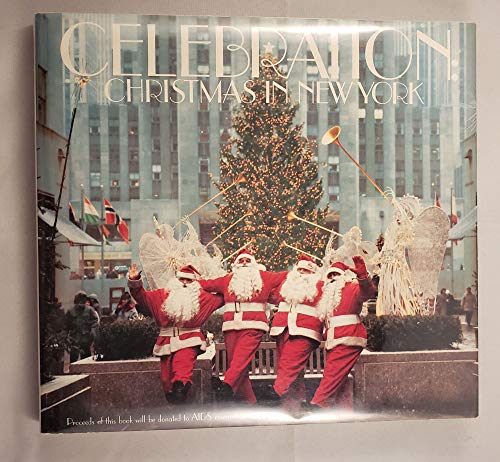



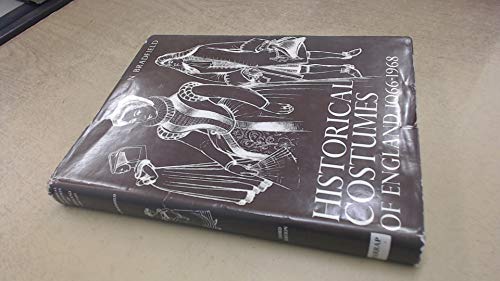

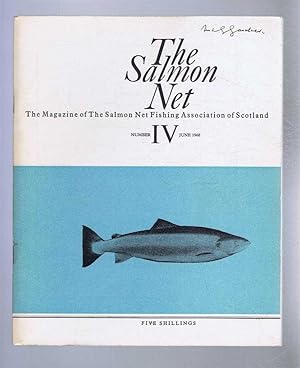
![Imagen del vendedor de Proceedings of the Society at its sixty-fourth annual meeting, held October 19, 1916 [LeatherBound] a la venta por True World of Books](https://pictures.abebooks.com/inventory/md/md31533687111.jpg)

